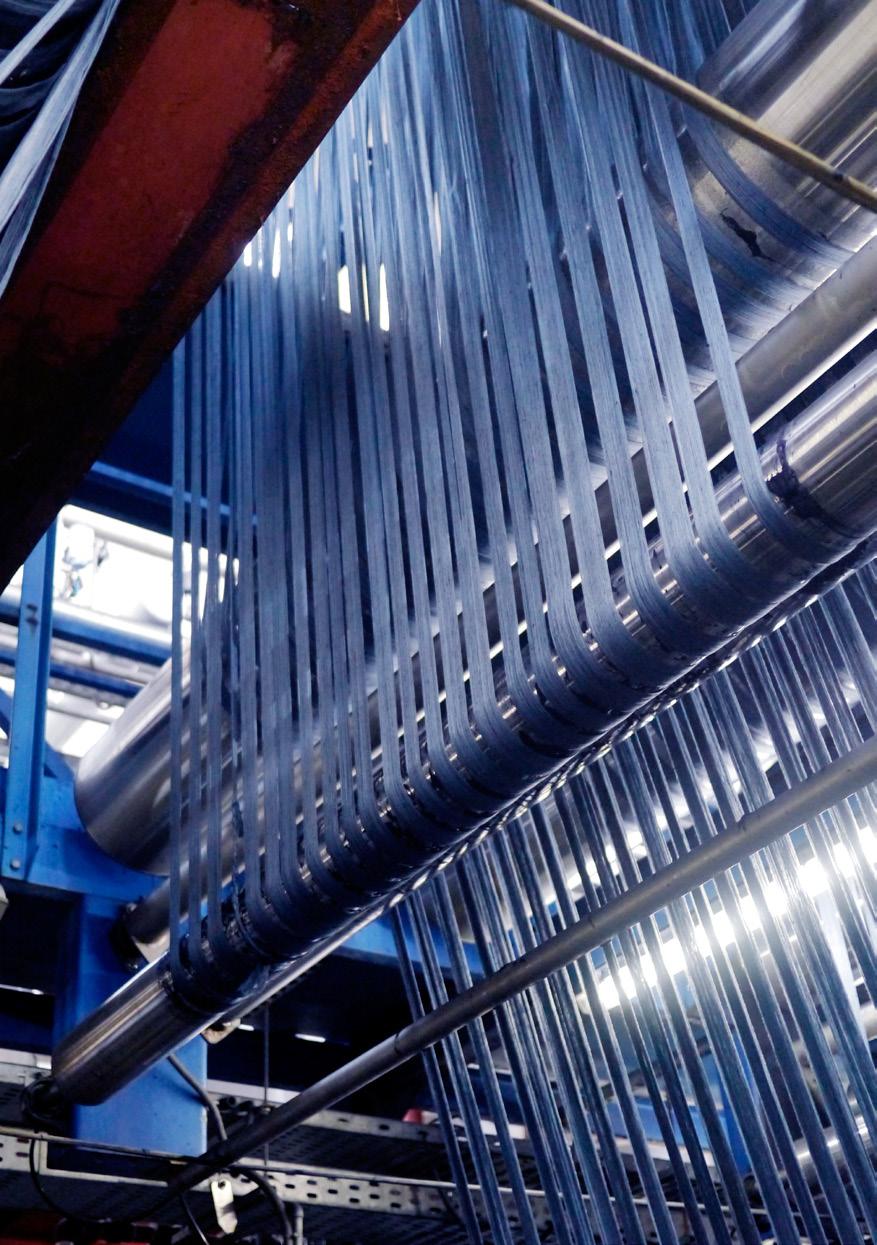
7 minute read
WORKING WITH NEELA —
What we can do for you.
Working With Neela
Advertisement
At Neela Denim, we are 100% vertical.
We provide a complete service for our clients by taking care of everything from growing our own cotton in a responsible way, to spinning, dying, to designing fabrics, weaving denim, taking orders, to the point of delivery.
• We encourage joint product development, creating opportunities for you to design bespoke products with exclusivity to your business.
• This ensures we have full quality control over all of our processes and we are able to guarantee high quality products at each stage of production.
• For your own peace of mind, we use an independent quality auditor to make sure things are on track for your satisfaction.
• We offer competitive pricing on committed volumes.
• We provide a great service and are consistent with our product on repeat orders.
• We are looking at various ways to reduce lead times and be just in time.
Being Leed Gold Certified means that with careful planning and consideration Neela have created an environment that has sustainable sites, is water efficient, saves energy, has a good atmosphere, saves on materials and resources, has good indoor environmental qualities, is innovative in operations and prioritises Neela’s regional surroundings (see Figure 1).
Since Neela has been built for purpose as a ‘Green Building’ this means we use considerably less energy, less carbon, less water and less waste in the manufacturing process as compared to non-Leeds Certified buildings (see Figure 2).
WE ARE 100% VERTICAL — This is our denim manufacturing process.

100% VERTICAL:
YARN MANUFACTURING
OPENING & CLEANING
CARDING
DRAWING ROVING
LINK RING SPINNING WINDING
SPINNING
FABRIC MANUFACTURING
WARPING DYING
BEAMING SIZING
WEAVING FINISHING INSPECTION
CONTROL & TESTING
SHIPPING
Growing Cotton
We get all of our cotton direct from the source from cotton growers and ginners in a sustainable and responsible way.

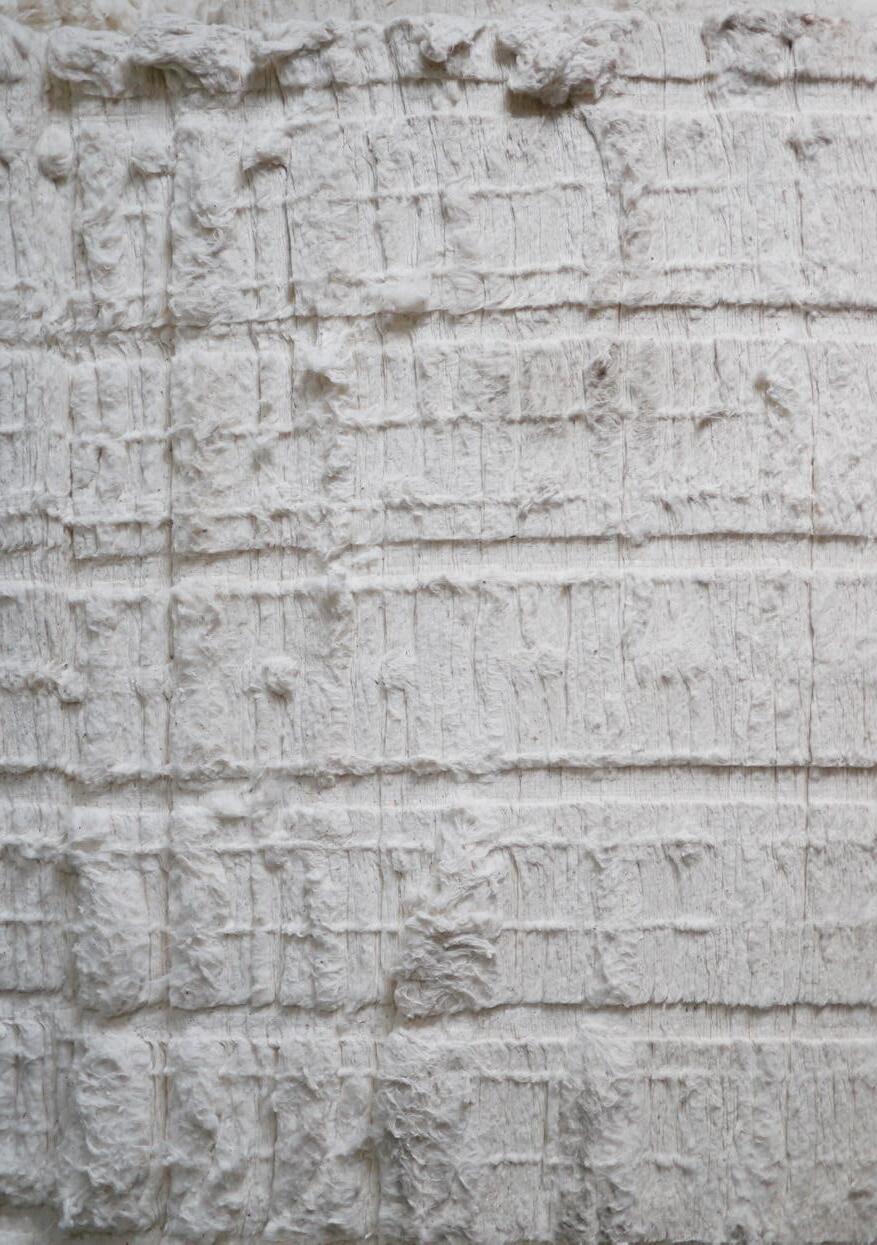
Cotton Harvesting
We use a number of picker machines to harvest our cotton into compact bale bricks.
Cotton Ginning
This machine quickly and easily separates Cotton fibres from their seeds.
Yarn Manufacturing
OPENING AND CLEANING
Opening and cleaning is the first step in preparing the cotton to be made into yarn. Highly compressed bales come with some leaf particles from the cotton plant. The Top feeder then picks off a layer of fibre and feeds it to the cleaning machine, which opens blend and fluffs the fibre.
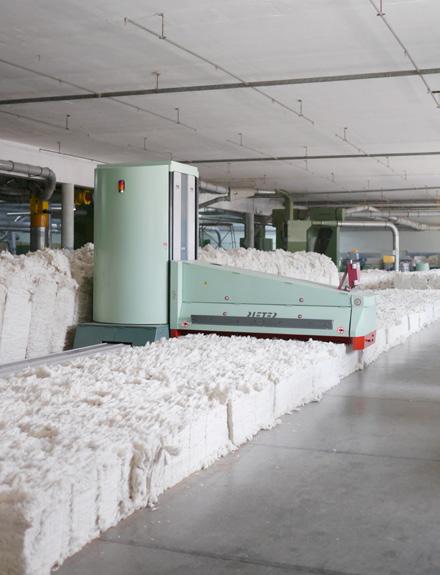
Carding
During the carding process, the cotton is further cleaned and aligned, the weight kept as a constant. A mat of fibre is fed into the card. The metallic wire covered cylinders parallel the fibres. A very thin layer of fibre called a web is carefully removed from the cylinder and condensed into a fragile rope called a sliver.
Drawing
Slivers continue onto the drawing process which blends slivers together for better weight uniformity. Six strands of card sliver are combined to produce one strand of drawing sliver. The process further straightens the fibres ready for the roving process.
Roving
The roving process drafts the drawn sliver into a smaller and finer form that will fit on a spinning frame. For every inch of drawing sliver fed, four inches of roving are produced.

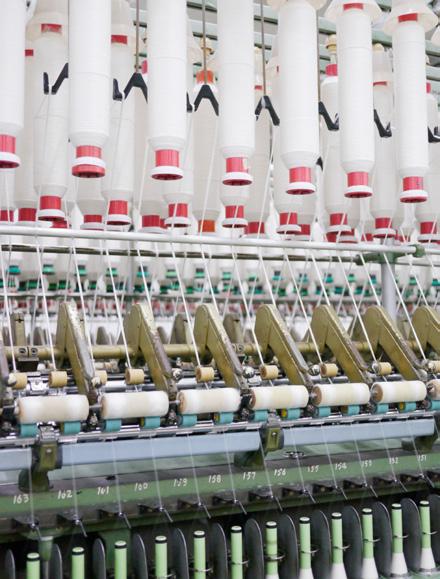


Ring Spinning
Ring Spinning uses a robotic conveyor that moves the finished bobbins to the next process untouched by human hands. The roving is further drafted and twisted, taking shape of thread, which is referred to as yarn. Special computerised attachments on the spinning frame allow us to add thick places or slubs to the yarn to create a vintage denim appearance.
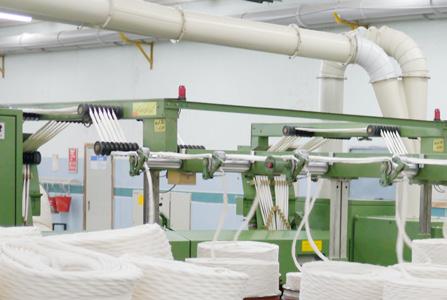
Winding
The winding process combines the small bobbins from the ring spinning frame into large package. The yarn passes through optical clearers on the winder where irregularities are detected and cut out. The yarn is then spliced back together undetectable by a mechanical splicer called a twin disc. The yarn is then prepared for either warp and weft.
Fabric Manufacturing Warping
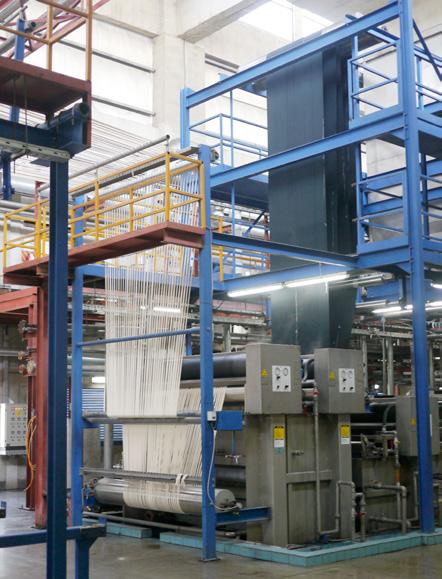

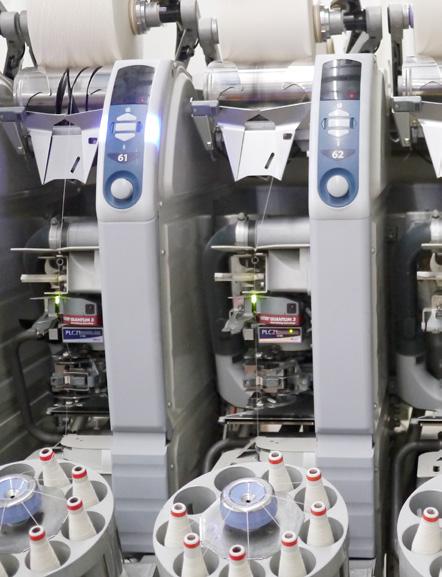
In the warping process 300 to 450 packages of yarn are placed into racks called a creel. The yarns thread through the creel and pass through a comb. The ends are pulled simultaneously through a tension device and then wound into a ball warp which is sent to dyeing.

Dyeing
The warp yarns are dyed before the fabric is woven. Rope dyeing, or long chain dyeing is a process unique to the application of indigo. The ball warps are loaded at the entry end of the range and are processed through a series of boxes, which contain indigo dye. After each box or dip, the ropes are exposed to the air, where oxidation of the dye takes place. When the ropes come out of the first dip in indigo they are bright green, but immediately begin to turn blue. Several dips are required to build a dark shade. At the end of the range, the yarn is passed over steam-heated cans for dying. And then coiled into large tubs for beaming.
Beaming
The purpose of beaming is to separate and parallel the dyed yarns from the original rope form and wind them onto a section beam. The rope is pulled and combed, the warp ends are separated and paralleled and wound onto the section beam for the slashing.
Sizing
In preparation for weaving, a protective coating of starch called warp size is applied to the warp yarns. This coating is applied to give the warp yarns the strength and flexibility to withstand the stress and abrasion of weaving.

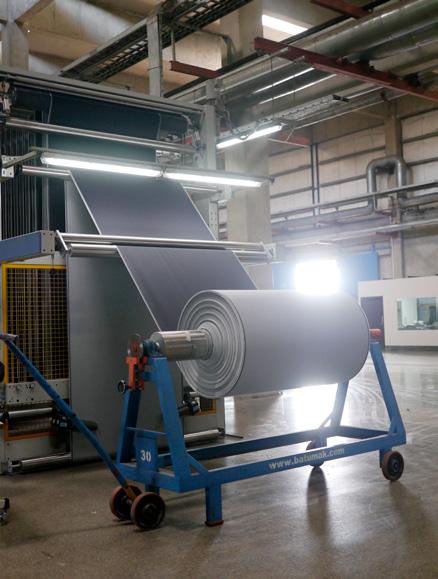

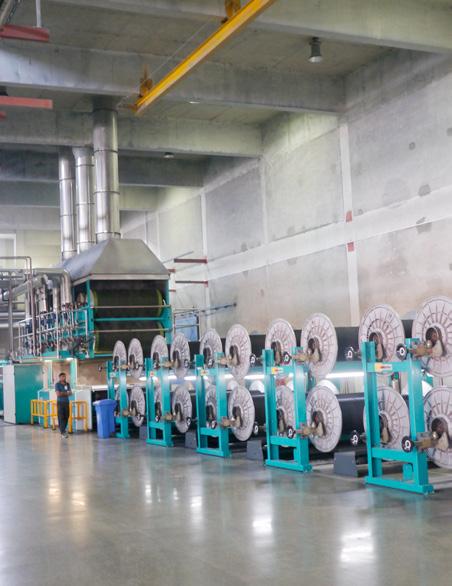
Weaving
Weft yarns are interlocked with warp yarns during the weaving process. High-speed looms propel the weft yarns through the shed in different ways depending upon the machine type. A warp of more then 2000 yards is woven into one continuous roll of fabric ready for finishing.
Finishing
Finishing involves processing the fabric through a continuous range where desired shrinkage and stiffness levels are achieved. Finishing also gives the fabric a desired surface effect and sets the desired width. It is during the finishing process where skew is added to the fabric to prevent leg twisting in garments. The warp shrinkage of the fabric is established at the sanforizer.
Inspection
In addition to quality testing and inspections conducted throughout the entire manufacturing process. Operators inspect each yard of denim.

CONTROL & TESTING
Controls are in place for each process from dying to finishing to ensure we meet the correct standards. We use sophisticated equipment in our labs to monitor shrinkage, weight, strength and shade.
Shipping
Once everything has been tested and checked for quality our fabric is ready to be shipped directly to you.
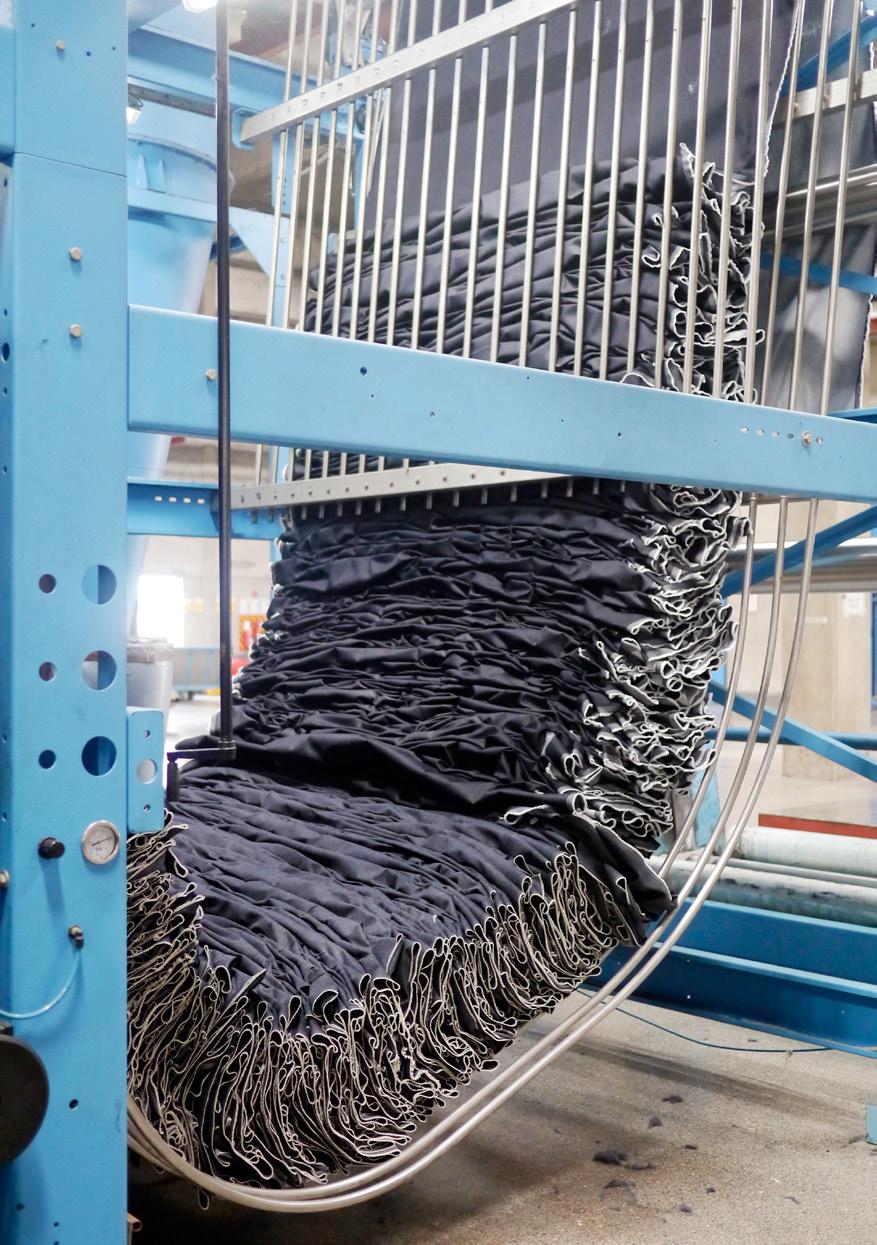
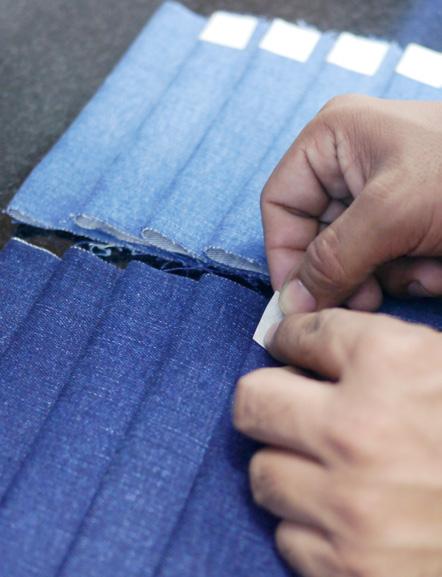

Corporate social responsibility (CSR) —
Initiatives created through Neela Denim.

Tell us about CSR project initiatives at the Sapphire Group.
We do many CSR projects, from the very beginning of The Sapphire Group, my grandfather focused on community. 99% of all of our CSR projects today are in the Health Care & Education sectors.
Moreover, we have ensured that the premises are maintained at a standardized level of cleanliness in order to facilitate safe working operations. We have also sought to encourage workers to ‘be green,’ a concept that has yet to be embraced in Pakistani culture, through numerous workshops and recycling options across the business facilities.
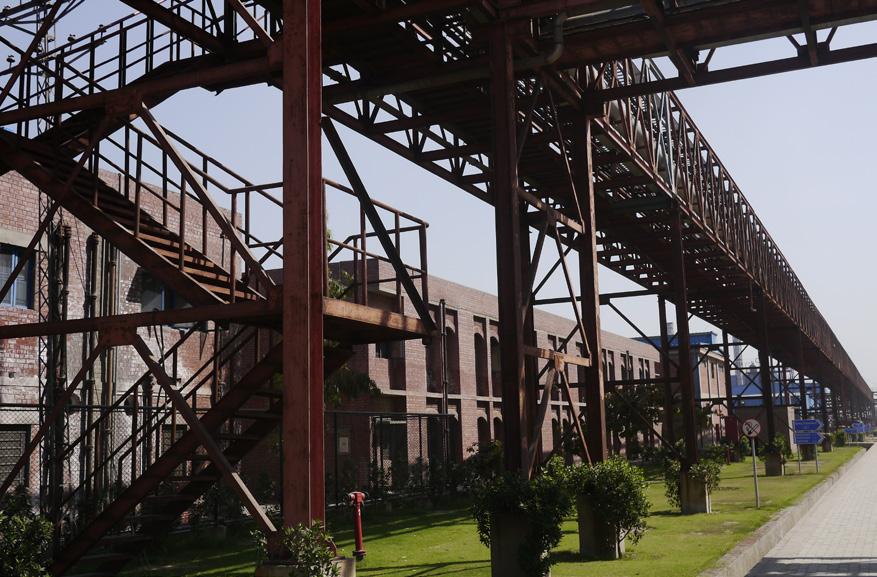
We are proud to see cooperation from employees and their assumption of responsibility owed to their surrounding environment.
HOUSING:
We have on-site housing in all of our plants, we have bachelor housing and family housing. A lot of our employees came from small villages, and not from the city itself so we needed to provide them with clean housing. We created clean, hygienic homes and environments for families to grow up with higher standards then which they may have came from.
Eye Camp
Each year we travel 1.5 hours to a town called Sheikhupura outside of Lahore, where qualified doctors treat the poor with cataracts disease. We do full operations and treatments free of charge.
Schools
We have a huge cluster of plants in Sheikhupura, mostly our spinning units are there. When we initially put up those units there were no schools in that entire area. So one of the issues the workers faced was that they had kids and were living in the colonies, but they were left with the question: ‘where do we send our kids to schools?’ So we built Abdullah School right next to one of our spinning units. We started with nursery, then Grade 1, right up to Graduation.
We do charge a very nominal fee from our workers, to keep the school selfsustaining. We chose not to give this for free because we believe that when someone pays the fees, whether it’s a small or large amount, he feels it is important, opposed to not paying anything, people will take it for granted, will not send their kids on time. It creates that value for them also, just by charging a nominal fee.
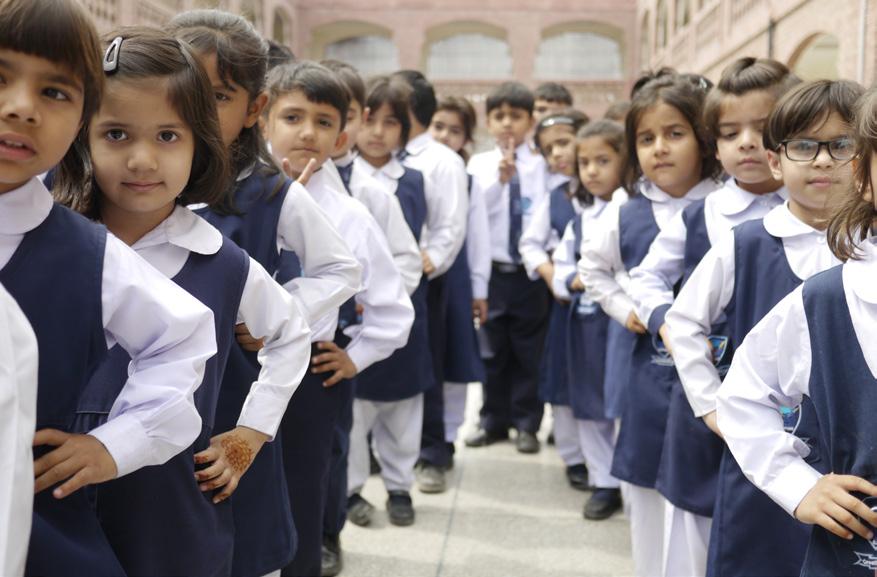
Lums Outreach Program

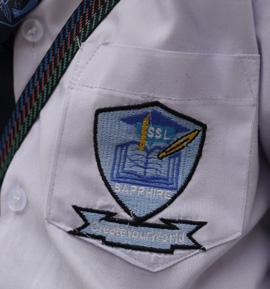
There are a lot of institutions in Pakistan where The Sapphire Group are one of the first original sponsors, for example I am on the board of original sponsors for the Lahore University of Management Sciences (LUMS). Aga Khan University Hospital is another that my grandfather contributed a lot to and we are still involved with.
We sponsor students for education, for instance the ‘LUMS Outreach Program’ for children who are very bright but do not have access to funds to support their education. For example the son of a gardener will have an opportunity to go to a good institution like LUMS.

Even in one of our spinning mills, the son of one of our workers is very bright, and he got selected for this program – it’s amazing to see people from underprivileged backgrounds have an opportunities to get into higher education.
EMPLOYEES & THEIR FAMILIES
I am always encouraging HR to get the family’s together for events, taking them out for outings, hikes, for the employees and their wives and kids to all feel connected to each other and feel connected to us too. We want people to enjoy their time working with us, build loyalty organically and grow good talent. We strongly felt that if our employes have any problems with education or medical illness, we feel compelled to help them; such as through covering the costs of education where families could not afford it themselves. We are proud to be at the backhand of having had provided these opportunities to such individuals, with some having had secured PhD scholarships at prestigious universities in the USA. I mean, just look at that! How could we not want to be a part of something like that?
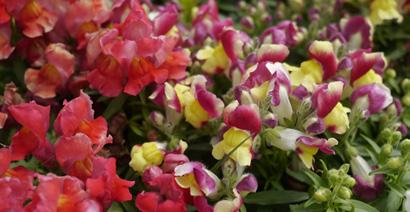
NeelaBlue.com info@neelablue. com

+92 42 35392370-2
NEELA by Sapphire Fibres Ltd. 3.5 km off Raiwind Manga Road
Raiwind, Lahore, Pakistan. PO Box: 55150
You may not copy, reproduce or republish any of this company profile, without prior written permission of Neela.
If you wish to make use of any material contained within please contact Neela by Sapphire Fibres. All designs, artwork, layout and photography ©Neela 2018. All Rights Reserved.



